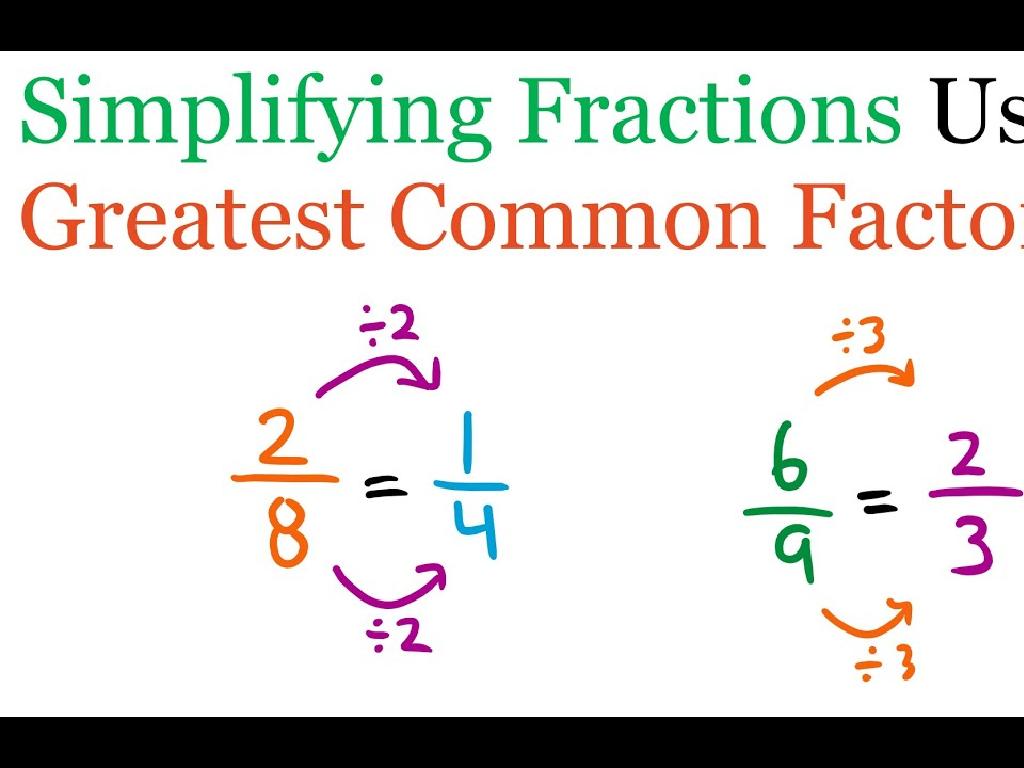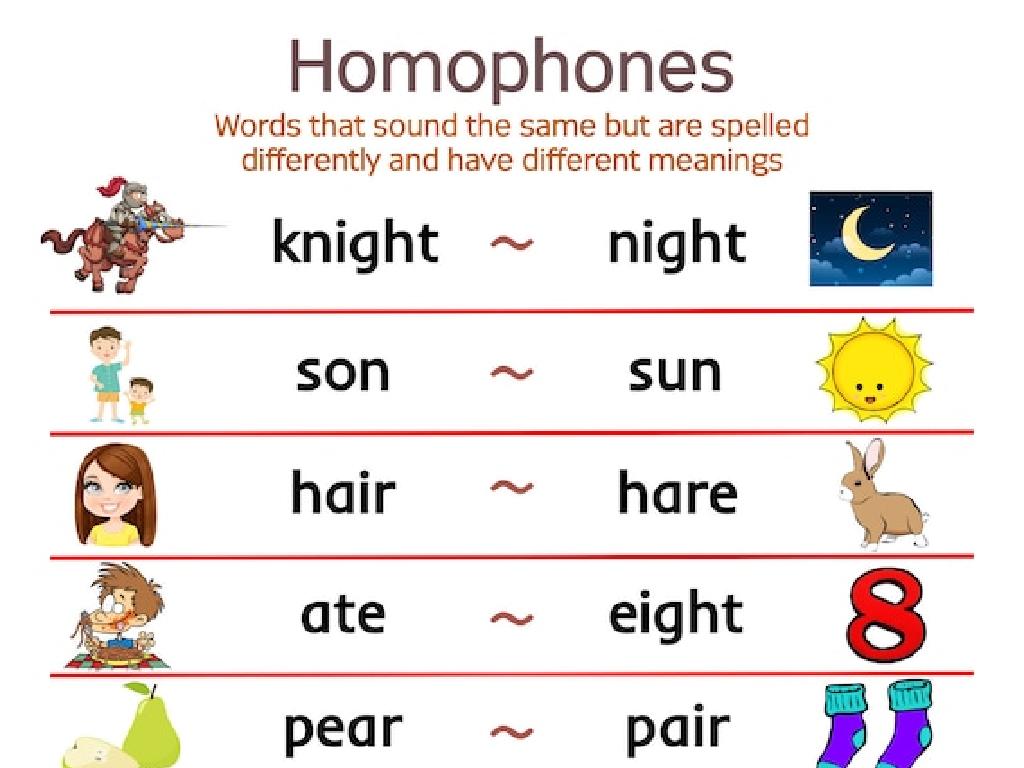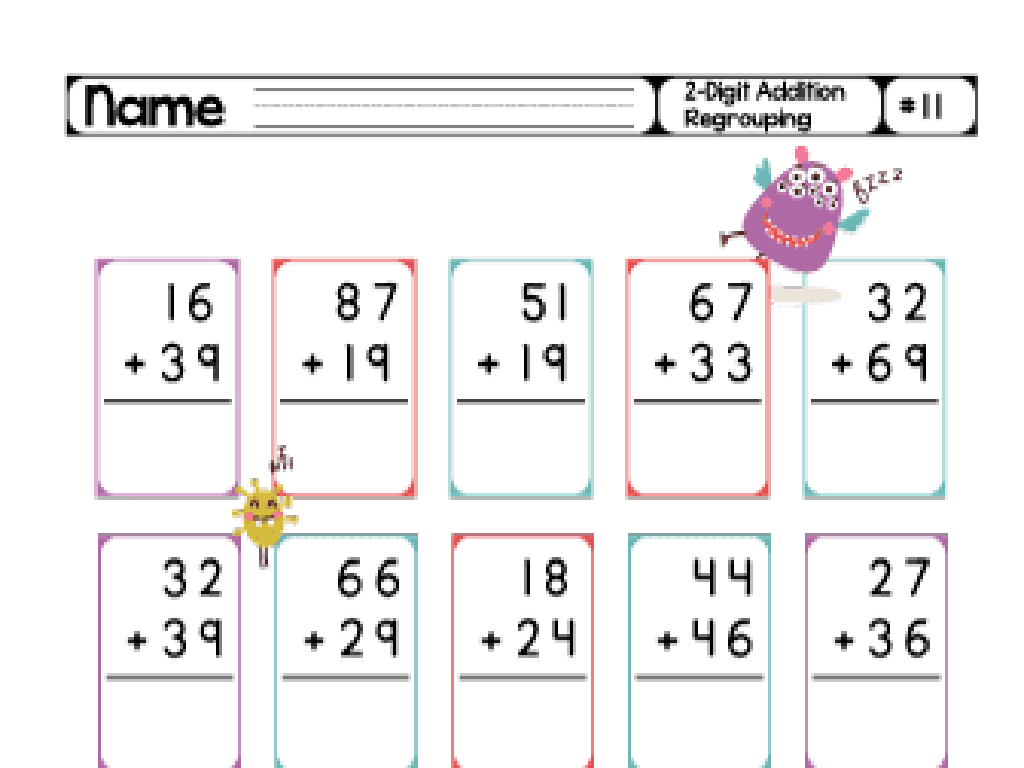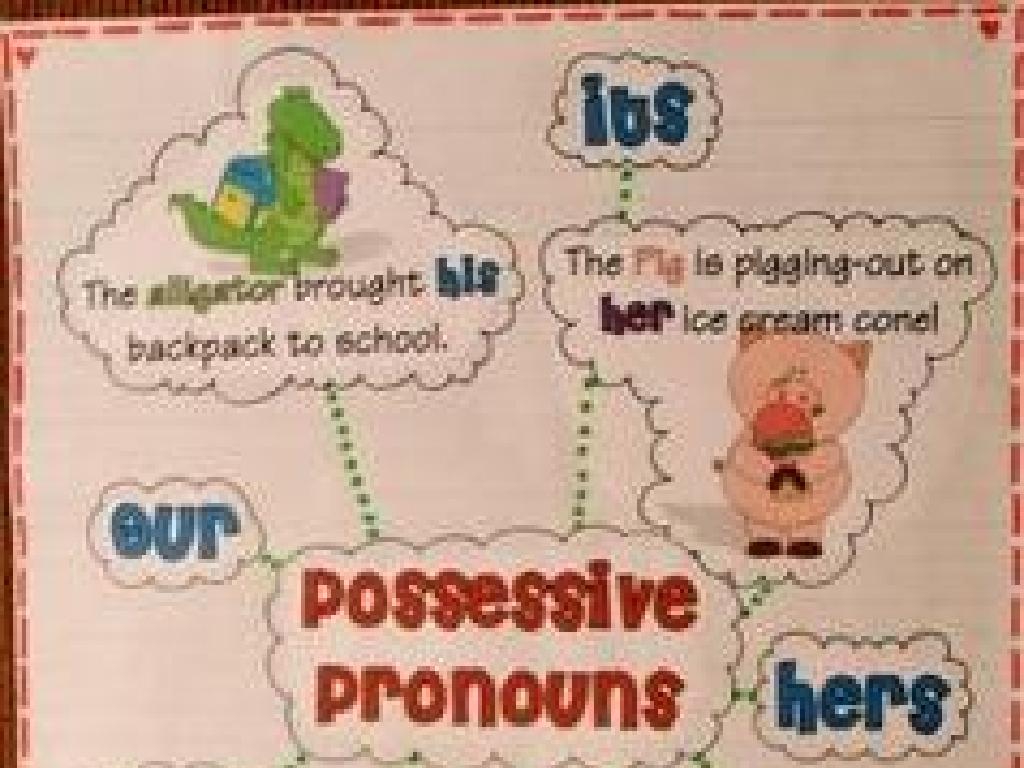Compound Events: Find The Number Of Outcomes
Subject: Math
Grade: Seventh grade
Topic: Probability
Please LOG IN to download the presentation. Access is available to registered users only.
View More Content
Exploring Compound Events in Probability
– Probability: a measure of chance
– Simple vs. Compound Events
– Simple events have one outcome; compound events have multiple
– Calculating outcomes for compound events
– Use the Counting Principle: multiply the number of outcomes for each event
– Real-world examples of compound events
– Flipping a coin and rolling a die together
|
This slide introduces students to the concept of probability as a way to measure the likelihood of an event occurring. It distinguishes between simple events, which have a single outcome, and compound events, which involve the combination of two or more simple events. Emphasize the Counting Principle, which states that if you have multiple events happening in sequence, you can find the total number of outcomes by multiplying the number of outcomes for each individual event. For example, if you flip a coin (2 outcomes) and roll a die (6 outcomes), there are 2 x 6 = 12 possible outcomes. Encourage students to think of other examples of compound events they may encounter in their daily lives.
Understanding Compound Events in Probability
– Define Compound Events
– A compound event consists of two or more simple events.
– Simple vs. Compound Events
– Simple events have one outcome; compound events have multiple.
– Real-life Compound Event Examples
– Flipping a coin and rolling a die at the same time.
– Calculating Outcomes
– Use the Counting Principle to find the total number of possible outcomes.
|
This slide introduces the concept of compound events in the context of probability, which is crucial for understanding how to calculate the likelihood of various outcomes. A compound event is the combination of two or more simple events, where a simple event has only one possible outcome. To illustrate the difference, compare a single coin flip (simple event) to flipping a coin and rolling a die simultaneously (compound event). Provide real-life examples such as choosing a meal from a menu or picking an outfit from different clothing options. Teach students the Counting Principle, which states that if one event can occur in ‘m’ ways and a second event can occur in ‘n’ ways, then the two events together can occur in m x n ways. This principle helps in calculating the number of possible outcomes for compound events.
Calculating Outcomes for Single Events
– Recap single event probability
– Identify possible outcomes
– An outcome is a possible result of a probability event
– Activity: Coin toss outcomes
– List outcomes of flipping a coin: Heads or Tails
– Discuss activity findings
– Share and compare results with the class
|
Begin with a brief review of single event probability to ensure students recall the basics. Explain that the possible outcomes are the different results that could happen. For the activity, have students flip a coin and record the result as either heads or tails. They should create a list of all possible outcomes from multiple flips. After the activity, lead a discussion where students share their findings and understand that each flip is an independent event with two possible outcomes. This will set the foundation for understanding compound events in future lessons.
Compound Events: An Introduction
– Defining compound events
– A compound event consists of two or more simple events.
– Independent vs. dependent events
– Independent events do not affect each other, while dependent events do.
– ‘And’ & ‘Or’ in compound events
– ‘And’ implies both events must occur; ‘Or’ means either event can occur.
– Calculating outcomes
– Use multiplication for ‘And’ events and addition for ‘Or’ events.
|
This slide introduces the concept of compound events in probability, which are events involving two or more simple events. It’s crucial to differentiate between independent events (where the outcome of one does not affect the other) and dependent events (where one event influences the other). Understanding the use of ‘And’ and ‘Or’ helps in determining the total number of outcomes. ‘And’ is used when events must occur simultaneously, and we multiply the number of outcomes for each event. ‘Or’ is used when any of the events occurring is sufficient, and we add the number of outcomes. Provide examples to illustrate these concepts, such as flipping a coin AND rolling a die (independent), or drawing two cards from a deck without replacement (dependent).
Calculating Outcomes in Compound Events
– Use tree diagrams for outcomes
– Visualize possible outcomes of a sequence of events
– Multiplication rule for events
– If events are independent, multiply the number of outcomes for each event
– Example: Rolling dice
– What are the possible results of rolling two different dice?
– Practice with exercises
|
This slide introduces students to the concept of calculating the number of possible outcomes in compound events using tree diagrams and the multiplication rule. Tree diagrams are a visual representation that helps in understanding all possible outcomes of a sequence of events. The multiplication rule is a fundamental principle that states if you have two independent events, the total number of possible outcomes is the product of the number of outcomes for each individual event. For example, when rolling two dice, since each die has 6 sides, the total number of outcomes is 6 (from the first die) multiplied by 6 (from the second die), which equals 36 possible outcomes. Encourage students to practice with various exercises to solidify their understanding.
Compound Events: Practice Problems
– Apply learned concepts
– Solve sample problems
– Work through problems as a class to reinforce understanding
– Engage in peer discussions
– Discuss approaches and solutions with classmates
– Collaborate on problem-solving
– Team up to tackle complex problems, share strategies
|
This slide is focused on reinforcing students’ understanding of compound events and the calculation of outcomes through practice problems. Start by applying the concepts learned in previous lessons to new problems. Work through a few sample problems together as a class, demonstrating step-by-step solutions. Encourage students to discuss their thought processes and problem-solving techniques with their peers. Finally, facilitate group work where students can collaborate on solving more challenging problems, allowing them to learn from each other and think critically. Provide guidance and support as needed, and ensure that each group stays on task and contributes to the discussion.
Class Activity: Compound Events
– Create your compound event
– Solve your created problem
Consider possible outcomes and use the multiplication rule
– Share your solution
Explain how you found the number of outcomes
– Discuss with classmates
Learn from different approaches and solutions
|
This activity is designed to engage students in creating their own problems based on compound events, thereby deepening their understanding of the concept. Students should think of a scenario with multiple events, like flipping a coin and rolling a die, and then determine all possible outcomes. They will apply the multiplication rule to solve their problems. After solving, students will share their solutions with the class, explaining their thought process. Encourage students to discuss different methods and solutions with their classmates to appreciate various approaches to the same problem. This will foster a collaborative learning environment where students can learn from each other.
Wrapping Up: Compound Events & Probability
– Recap: Compound Events Outcomes
– Review how to calculate outcomes for events with more than one possibility.
– Probability’s Role in Decisions
– Understanding probability helps us make informed choices in uncertain situations.
– Homework: Practice Compound Events
– Solve assigned problems to reinforce today’s lesson.
|
As we conclude today’s lesson, it’s important to review the key concepts of calculating outcomes for compound events. Emphasize the practical applications of probability in everyday decision making, such as predicting weather or assessing risks. For homework, students should complete the set of practice problems that focus on compound events to solidify their understanding. These problems will involve scenarios where they must determine the number of possible outcomes, helping them to apply what they’ve learned in a concrete way. Encourage students to approach the homework with the strategies discussed in class and to come prepared with questions for the next session.





